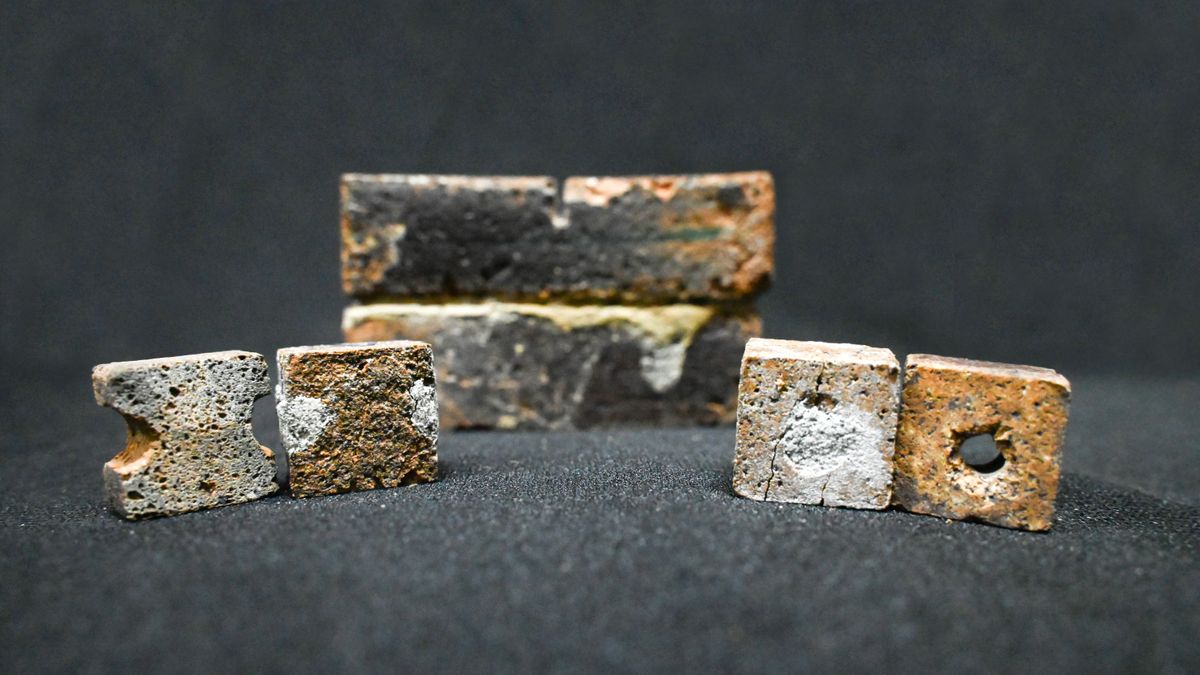If all goes to plan, scientists may someday begin building outposts on the moon — and some experts believe that these outposts could be constructed with bricks made out of lunar regolith. And now, a new study based on lunar regolith simulant experiments suggests that if these moon-dust bricks crack, bacteria could be used to seal them back up.
Using as many local lunar resources as possible to construct a base on the moon is essential to keep costs down; launching large masses of material from Earth to the moon is very expensive. Thus, making bricks out of lunar regolith has long been mooted as a potential solution. Many teams around the world, including researchers at the Indian Institute of Science (IISc), have been experimenting making these kinds of bricks with lunar regolith simulants.
Regolith, for context, refers to the loose dust and rocks covering the surface of the moon. Actual samples of lunar regolith are rare and precious, and therefore simulants, which aim to replicate different types of regolith, are used for experiments instead. Previously, the IISc researchers found a way of using a terrestrial soil bacterium called Sporosarcina pasteurii to make bricks out of regolith simulant. The bacteria are able to convert urea — which the bacteria produce as waste — and calcium into calcium carbonate crystals. When mixed with guar gum that is extracted from guar beans, these crystals are able to bind regolith particles together to form bricks.
Later, the same team experimented with making lunar bricks through sintering, which involved heating a compact mix of regolith simulant with polyvinyl alcohol, which is a soluble polymer, to extremely high temperatures in a furnace. The bricks formed through sintering appeared even stronger than the bacterium-built bricks — however, the conditions on the moon are pretty severe.
Exposed to the vacuum of space, lunar bricks would have to withstand a temperature range of a high of 250 degrees Fahrenheit (121 degrees Celsius) to a low of -208 degrees Fahrenheit (–133 degrees Celsius) throughout the course of a lunar day, which would place extreme thermal stress on the bricks. They would also be subject to bombardment by micrometeorites and cosmic rays.
"Temperature changes can be much more dramatic on the lunar surface, which can, over a period of time, have a significant effect," Koushik Viswanathan of the IISc's Department of Mechanical Engineering said in a statement. "Sintered bricks are brittle. If you have a crack and it grows, the entire structure can quickly fall apart."
Therefore, being able to adequately repair bricks on the moon before a lunar outpost crumbles to dust would be essential. So, Viswanathan and colleagues returned to their earlier idea of using Sporosarcina pasteurii, but this time not to make the bricks themselves, but to create a sealant that can fill in cracks and holes in the bricks.
The team sintered bricks out of regolith simulant, and then applied numerous types of damage to them — holes, V-shaped notches and semi-circular notches, for instance — all of which would result from structural fatigue. The researchers then poured a mixture, which they refer to as a slurry, concocted from a combination of Sporosarcina pasteurii, guar gum and regolith simulant, over the bricks and left them for a few days, allowing the slurry to seep into the bricks and fill any holes or cracks.
The bacteria did two things. One, it made calcium carbonate that effectively filled the cracks, and two, produced biopolymers that allowed the mixture to bond with the brick, making it solid once again. The team found that this returned 28 to 54% of a brick's previous compressive strength, although it doesn't quite return the bricks to their original strength.
"We were initially not sure if the bacteria would bind to the sintered brick," said the IISc's Aloke Kumar. "But we found that the bacteria can not only solidify the slurry but also adhere well to this other mass."
Accomplishing this in a laboratory is one thing, but doing so in difficult conditions on the moon is another thing.
"One of the big questions is about the behavior of these bacteria in extraterrestrial conditions," said Kumar. "Will their nature change? Will they stop doing [the carbonate production]? Those things are still unknown."
To try and answer some of these questions, the team is proposing to send a sample of Sporosarcina pasteurii into space as part of the forthcoming Gaganyaan mission, which will be the first crewed Indian space mission, taking three astronauts beyond Earth as early as 2026.
"If that happens, to our knowledge, it will be the first experiment of its kind with this type of bacteria," said Viswanathan.
The research was published on March 27 in the journal Frontiers in Space Technologies.
.png)
 German (DE)
German (DE)  English (US)
English (US)  Spanish (ES)
Spanish (ES)  French (FR)
French (FR)  Hindi (IN)
Hindi (IN)  Italian (IT)
Italian (IT)  Russian (RU)
Russian (RU) 









Comments